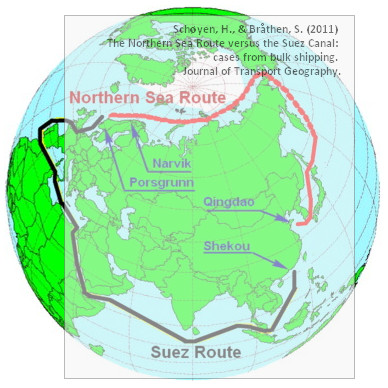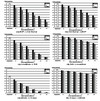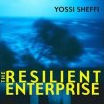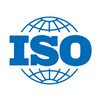 Sought after by polar explorers and long awaited by the shipping community: The Northern Sea Route. Year by year the Arctic summer ice cap is melting and the race will be soon be on to take part in what is perhaps the last and final adventure in the development of maritime logistics and global shipping lanes. In The Northern Sea Route versus the Suez Canal: cases from bulk shipping, two colleagues of mine, Halvor Schøyen and Svein Bråthen, explore the potential opportunities and possible risks of what is a new shortcut between Europe and Asia. While this additional shipping route may give more flexibility, it is also a highly seasonal and highly uncertain route. Having said that, it is also a route that could be highly profitable.
Sought after by polar explorers and long awaited by the shipping community: The Northern Sea Route. Year by year the Arctic summer ice cap is melting and the race will be soon be on to take part in what is perhaps the last and final adventure in the development of maritime logistics and global shipping lanes. In The Northern Sea Route versus the Suez Canal: cases from bulk shipping, two colleagues of mine, Halvor Schøyen and Svein Bråthen, explore the potential opportunities and possible risks of what is a new shortcut between Europe and Asia. While this additional shipping route may give more flexibility, it is also a highly seasonal and highly uncertain route. Having said that, it is also a route that could be highly profitable.
Shorter, faster…better?
Why is the Northern Sea Route so important? Looking at this map of global shipping lanes, the answer is obvious and simple: The navigation distance from a port in Northwest-European to a port in the Far East much shorter compared to the route via the Suez Canal, and obviously, this shorter distance not only saves fuel, it will also allow a vessel to make more trips and carry more goods over the same time it would have taken it to go via Suez. The table below compares some of the major routes:

However, for all the potential benefits, there are also many possible risks, first and foremost uncertainty in the schedule reliability, because the Northern Sea Route is open during the summer season only, and there are no fixed dates guaranteeing when ice-free conditions will start or end. While this may not be so much an issue in bulk shipping, in liner shipping reliability is a crucial issue, as the Maersk Slow Steaming project has shown.
Two case studies
The authors apply the Northern Sea Route to two possible cases of bulk shipping, where iron ore or nitrogen fertilizer is shipped from Norway to China via the Northern Sea Route or via Suez or the Cape of Good Hope, and cullate the differences in days at sea, fuel consumption, costs and other charges.

In summary, while the Northern Sea Route is shorter, it also has speed restrictions, and thus may take equally long time as the other routes. However, slower speed leads to considerable fuel savings, and more importantly, to some, a sizeable reduction in CO2 emissions.
The gains from shipping operations on an ice-free Northern Sea Route appear to be reduced number of days at sea and more than doubling of the vessel fuel efficiency. For the corporate players in bulk shipping of relative low value raw materials, cost savings for fuel may appear as a driver to explore the Northern Sea Route for commercial transits, and not necessarily reduced lead time.
The Northern Sea Route coastal route alternatives, with vessel draught and beam limitation, are a hindrance for large vessels, and therefore achieve the same economies of scale in shipping as via Suez.
Environmental demands faced by the maritime shipping industry may emerge as one of the drivers for developing the Northern Sea Route. Increased knowledge about environmental benefits and costs for both the Northern Sea Route and Suez routes will probably be important factors in this respect.
The examples are very well calculated with traceable assumptions and calculations. That is a job very well done and is an impressive piece of work.
Not risk-free
The article contains a short section on supply chain uncertainty and risk categories, where the authors emphasize that establishing the Northern Sea Route is a highly uncertain undertaking and not without caveats. Besides the obvious climatological and seasonal issues, there is also ample political risk:
For the Northern Sea Route, ice-season variations and future Russian policy to Northern Sea Route infrastructure developments and foreign vessel transits currently appear as decisive uncertainties.
In other words: Things can change quickly here, for the better or for the worse. Then there are many environmental issues that need to be addressed, thus making corporate social responsibility a major keyword for shipping companies planning to use the Northern Sea Route.
If the Northern Sea Route is to be a feasible route in a corporate social responsibility context, the global benefits of reduced CO2 emissions from shipping and potential other environmental benefits should compensate for the added external costs caused by operating on the Northern Sea Route. Examples of such external costs in the Arctic sea are effects from increased air pollution (e.g. soot), deposition of various materials, and ship incidents and accidents with oil spill in highly vulnerable areas. Ships fuelled with LNG, a proven propulsion technology, might reduce the environmental costs on the Northern Sea Route
Logistics has a prominent role in the execution of company social responsibility, and just how far the corporate social responsibility of a shipping company could or should go can be seen in this post that I wrote some months ago: Corporate Social Responsibility – Do or Don’t Do?
Critique: Supply chain flexibility, agility and adaptability?
In the introductory section of their article, Schøyen and Bråthen claim that
Establishing the Northern Sea Route as an alternative shipping route to Suez and Cape of Good Hope could contribute to more flexible, agile and adaptable supply chains, because more route choices will result in a higher capacity, and may reduce chances for disruption and congestion.
This is reiterated in one of their three research questions
Does the Northern Sea Route, as a possible complementary route to Suez, represent an opportunity to improve agility and adaptability in supply chains?
Unfortunately, after reading the article, I must say that this one question has only been partially answered. The conclusion does state that
Combined with the fact that added shipping alternatives gives more route alternatives and flexibility, the Northern Sea Route option may possibly increase supply chain agility and adaptability
but apart from mentioning flexibility and agility a couple of times in the article, this topic is not explored as it could have been, by relating the ample literature on supply chain flexibility or supply chain agility to the impressive and solid calculations the authors did on the viability of the Northern Sea Route. While I cannot not claim to be an expert on the subject of flexibility or agility, I find it odd to have a research question that is not backed up by references to some related literature. One of the reasons why this may be lacking in this paper is that supply chain flexibility and agility is not what this paper is about in the first place, and two out of three questions answered isn’t that bad.
Having said that, this doesn’t make the article less convincing in that it is indeed the case that the Northern Sea Route does have the potential for making supply chains more agile and flexible. The paper makes a very good case for it, so implicitly, the question is answered, but I would have liked to seen a reference or two on flexibility and agility and what it means for supply chains and how the Northern Sea Route contributes to that, or not. In my opinion there can be no doubt that the Northern Sea Route increases flexibility, but perhaps not so much as to agility (as it is usually defined).
On the plus side, I should mention that the reference list does contain a number of articles related to logistics and supply chain risk that I haven’t heard of before, and which I intend to review in the future.
All in all, an excellent paper, and I look forward to reading more papers from Halvor Schøyen in the future.
Conclusion
Will the Northern Sea Route make the Suez route become obsolete? Definitely not, and obviously, the Northern Sea Route is not for everyone, as can be read from this statement in the conclusion:
For innovators and risk takers in ship operations and technology, the Northern Sea Route appears as a possible market niche and opportunity to gain market power.
So what do you think, will the Northern Sea Route become an established shipping lane in the future? And who is likely to take the advantage here? Already there are some countries and port agencies are trying to position themselves as possible future transit hubs for this route.
Reference
Schøyen, H., & Bråthen, S. (2011). The Northern Sea Route versus the Suez Canal: cases from bulk shipping Journal of Transport Geography DOI: 10.1016/j.jtrangeo.2011.03.003
Author links
- linkedin.com: Halvor Schøyen
- mfm.no: Svein Bråthen
Related links
- bfm.ru: The Northern Sea Route (Article in Russian citing me)
- wikipedia.org: Northern Sea Route
Related books
- bfm.ru:
Northern Sea Route
- (Article in Russian citing me)
- amazon.com: The Natural and Societal Challenges of the Northern Sea Route
Related posts
- husdal.com: A map of global shipping lanes
- husdal.com: How far does Corporate Social Responsibility go?
- husdal.com: Maersk Slow Steaming – Less cost, less disruptions?












